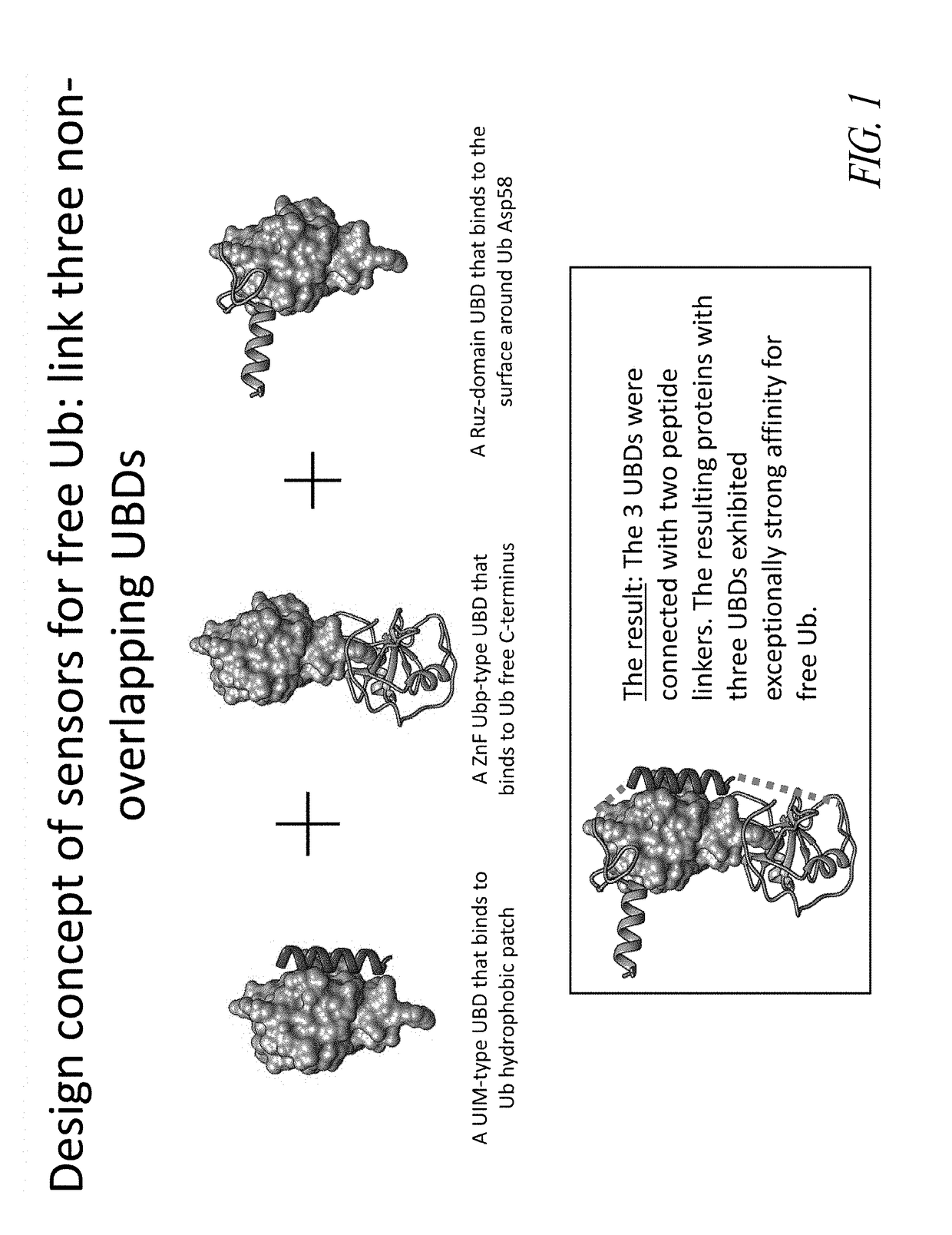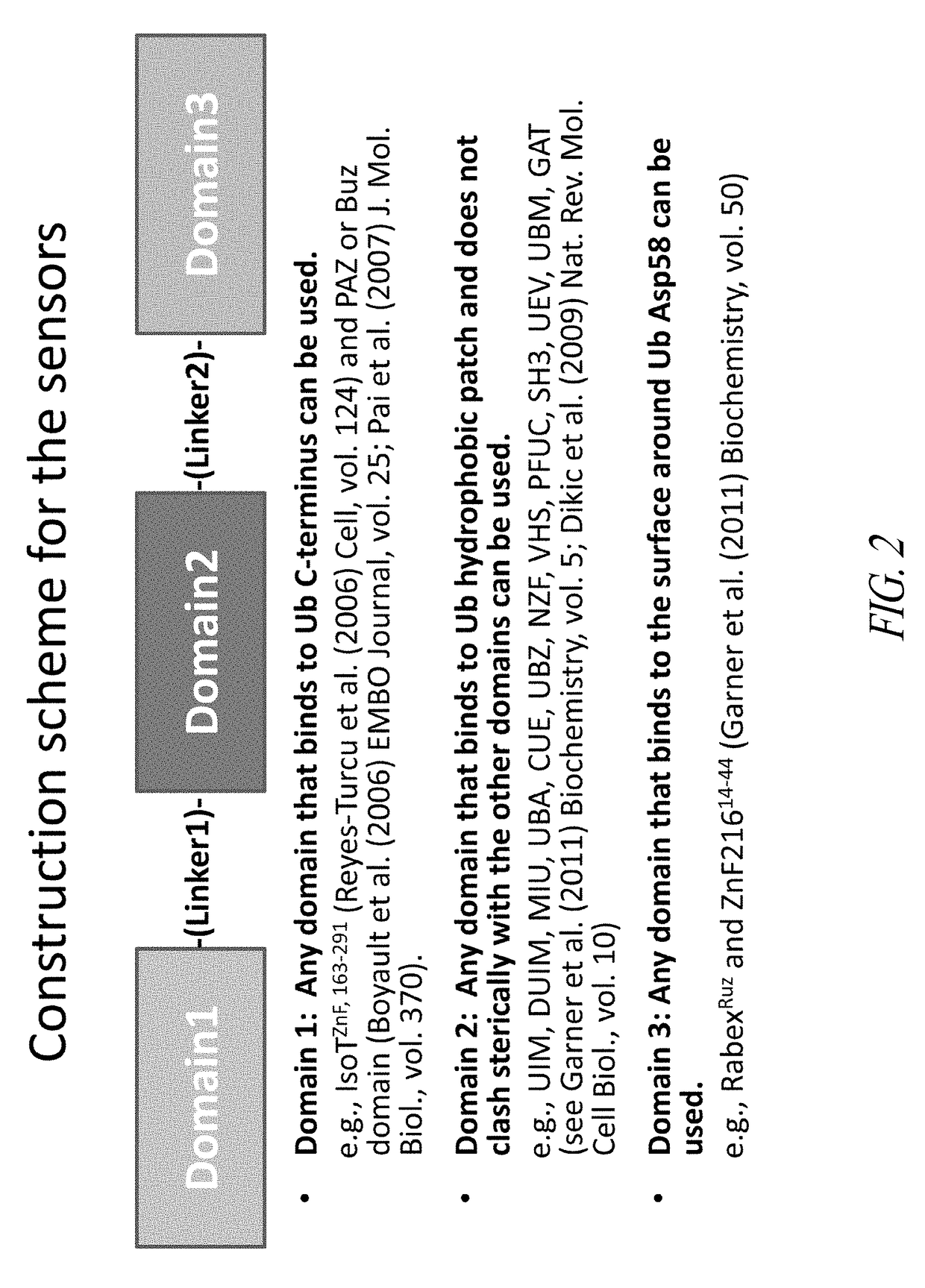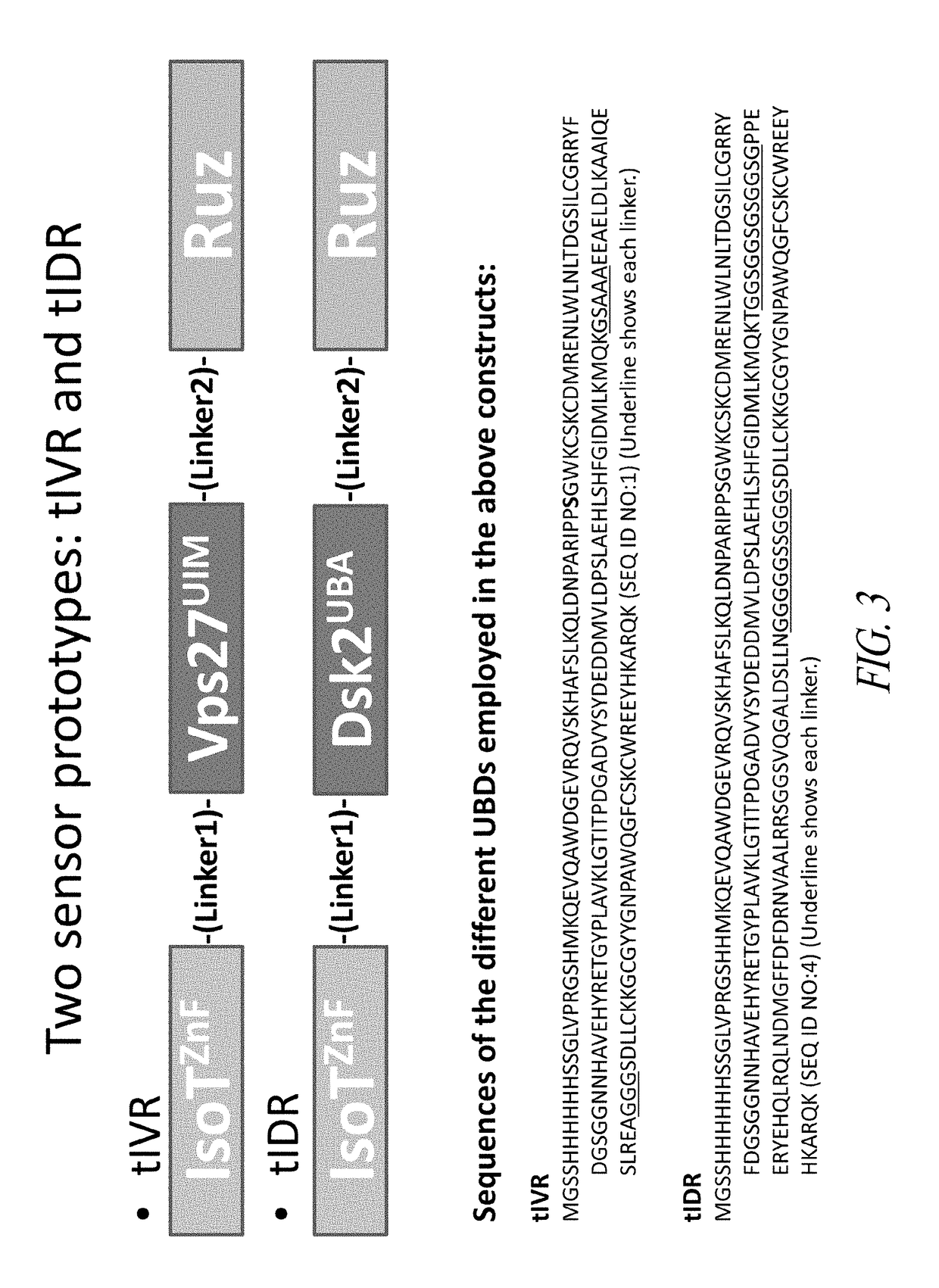Sensors and assays for ubiquitin or ubiquitin-like proteins
a technology of ubiquitin and assays, applied in the field of ubiquitin or ubiquitinlike proteins, can solve the problems of low precision or difficulty in implementation of methods
- Summary
- Abstract
- Description
- Claims
- Application Information
AI Technical Summary
Benefits of technology
Problems solved by technology
Method used
Image
Examples
example 1
Design and Construction of Chimeric Polypeptides
[0249]This example demonstrates the design and subsequent generation of chimeric polypeptides that bind to free ubiquitin proteins. Ubiquitin proteins can simultaneously interact with ubiquitin binding domains that bind to non-overlapping regions of ubiquitin (see FIG. 1). Chimeric polypeptides were designed that comprise a domain that could bind to the ubiquitin C terminus, a domain that binds the ubiquitin hydrophobic surface patch, and a domain that binds to the surface of ubiquitin near Asp58. These three binding domains were connected by two linker peptides to generate chimeric polypeptides that act as sensors for free ubiquitin proteins (see FIG. 2). These three ubiquitin binding domains can be connected by two linkers, resulting in a chimeric polypeptide that simultaneously binds the ubiquitin protein in three non-overlapping regions.
[0250]Using this strategy, two prototype chimeric polypeptide sensors were constructed. Both pro...
example 2
Binding Specificities of the Chimeric Polypeptides
[0257]The specificity of the chimeric polypeptide sensor for free ubiquitin was demonstrated by comparing the binding affinities of the chimeric polypeptide sensors to free ubiquitin with the binding affinities to conjugated ubiquitin proteins or ubiquitin-like proteins (see FIG. 8). A competition assay was performed to determine the binding affinity of tIVR to free ubiquitin, conjugated ubiquitin, or nedd8, a ubiquitin-like protein. When bound to tIVR, the Atto532-tagged ubiquitin display reduced fluorescent intensity when stimulated compared to Atto532-tagged ubiquitin that is unbound to tIVR. The competitor proteins, free ubiquitin, conjugated ubiquitin (UB-GB1), or Nedd8 were added to a 10 nM tIVR and 10 nM Atto532-tagged ubiquitin mixture. Their amino acid sequences are as follows:
Ubiquitin(SEQ ID NO: 22)MQIFVKTLTGKTITLEVEPSDTIENVKAKIQDKEGIPPDQQRLIFAGKQLEDGRTLSDYNIQKESTLHLVLRLRGGNedd8(SEQ ID NO: 23)MLIKVKTLTGKEIEIDIEPTDKVERIKERV...
example 3
Use of Fluorescence Intensity as a Readout
[0261]The chimeric polypeptide sensors can be used with assays that measure fluorescence intensity to detect free ubiquitin. When chimeric polypeptide sensors bind a fluorophore-tagged ubiquitin protein, the fluorescence intensity is reduced compared to when the fluorophore-tagged ubiquitin is unbound. Alternatively, when a fluorophore-tagged chimeric polypeptide sensor is bound to a ubiquitin protein, the fluorescence intensity is increased compared to when the chimeric polypeptide is unbound (see FIG. 13).
[0262]Fluorophore-tagged ubiquitins have altered fluorescence intensity when they are bound totIVR (see FIG. 14). The fluorescence intensity of fluorescein, Alexa488, or Atto532-tagged ubiquitin in the presence of tIVR compared to the absence of tIVR was experimentally determined. Fluorescence intensities of fluorescein, Alexa488, or Atto532-tagged ubiquitin in the presence or absence of tIVR is graphed; complex formation with tIVR result...
PUM
 Login to View More
Login to View More Abstract
Description
Claims
Application Information
 Login to View More
Login to View More - R&D
- Intellectual Property
- Life Sciences
- Materials
- Tech Scout
- Unparalleled Data Quality
- Higher Quality Content
- 60% Fewer Hallucinations
Browse by: Latest US Patents, China's latest patents, Technical Efficacy Thesaurus, Application Domain, Technology Topic, Popular Technical Reports.
© 2025 PatSnap. All rights reserved.Legal|Privacy policy|Modern Slavery Act Transparency Statement|Sitemap|About US| Contact US: help@patsnap.com



